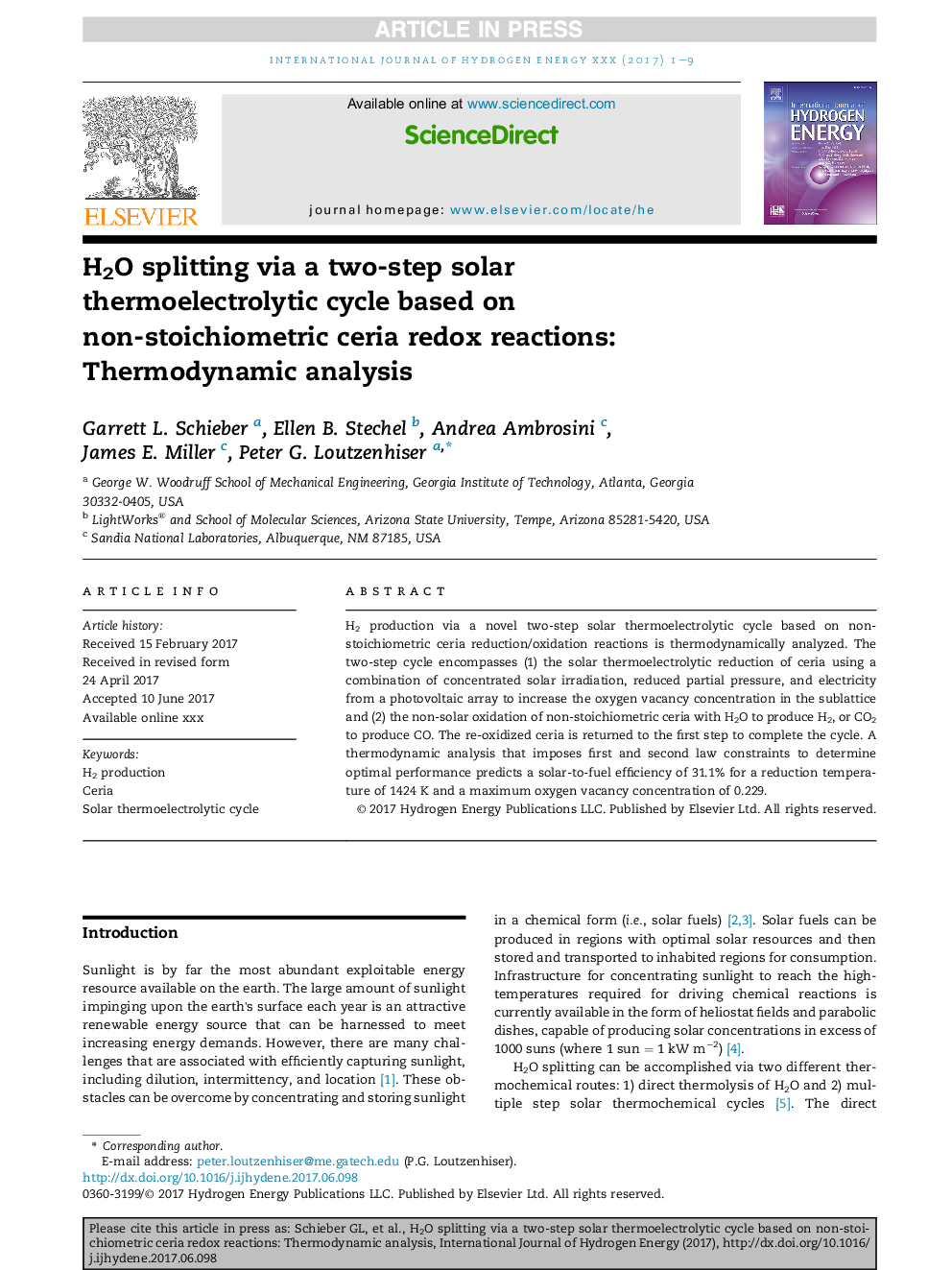| Article ID | Journal | Published Year | Pages | File Type |
|---|---|---|---|---|
| 5147008 | International Journal of Hydrogen Energy | 2017 | 9 Pages |
Abstract
H2 production via a novel two-step solar thermoelectrolytic cycle based on non-stoichiometric ceria reduction/oxidation reactions is thermodynamically analyzed. The two-step cycle encompasses (1) the solar thermoelectrolytic reduction of ceria using a combination of concentrated solar irradiation, reduced partial pressure, and electricity from a photovoltaic array to increase the oxygen vacancy concentration in the sublattice and (2) the non-solar oxidation of non-stoichiometric ceria with H2O to produce H2, or CO2 to produce CO. The re-oxidized ceria is returned to the first step to complete the cycle. A thermodynamic analysis that imposes first and second law constraints to determine optimal performance predicts a solar-to-fuel efficiency of 31.1% for a reduction temperature of 1424Â K and a maximum oxygen vacancy concentration of 0.229.
Keywords
Related Topics
Physical Sciences and Engineering
Chemistry
Electrochemistry
Authors
Garrett L. Schieber, Ellen B. Stechel, Andrea Ambrosini, James E. Miller, Peter G. Loutzenhiser,
